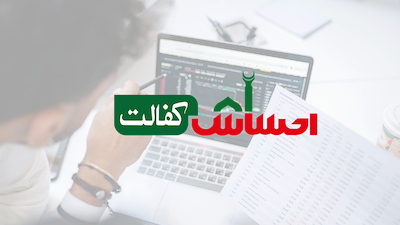In a recent article, Senator Dr. Sania Nishtar discussed important social changes through the ‘Ehsaas program’ back in 2019, giving us an opportunity to explore how the team used data analytics to enable robust beneficiary validation.
In late 2018, the Benazir Income Support Program- BISP worked to provide social support to then eligible beneficiaries. However, these beneficiaries were evaluated based on a 10 year old paper survey which lacked credibility from being suspected as carrying oblivious and/or outdated data. A family in 2010 who’s evolved to a better financial position might not be deserving in 2019.
In 2019, when regime change brought new policy on rebuilding institutions, digitisation of processes was focused to improve efficiency as part of the Ehsaas governance reforms.
The Ehsaas program began under the leadership of Dr. Sania Nishtar, who was then leading the Ministry of Poverty Alleviation and Social Safety- PASS in 2019. It was then the newly established Ehsaas team decided to adopt a technology driven, and robust beneficiary validation system.
The system was visioned as a ‘rule-based wealth profiling data analytics process’ that would be fair, and apolitical. It aimed to clean the former BISP’s data list and ensure that no undeserving candidate gets the benefits, ultimately making an ideal capacity for deserving families.
Defining Data Attributes
To turn the idea of an analytics-powered ‘wealth profiling system’ into reality, the team needed to define key ‘wealth attributes’. The data on these key attributes would then be needed by the team from ‘National Database and registration authority’- NADRA.
The following attributes were requested for access from NADRA:
- International travel
- Ownership of a car (inclusive of motorcycle owners)
- Average six-month telephone bill above Rs1000 a month (landline and mobile phone)
- Expensive processing of passports and national identity card numbers by three or more members of the family through Executive Centres
- Government employment
Like any data engineer, who’s purpose is to ensure data quality, Ehsaas team was morally bound to undergo a meticulous investigation on these parameters. The requirement was to thoroughly evaluate the validity of these attributes to be used as wealth profiles such that the candidates are posed to minimal risk in the two ‘lowest income’ categories.
Given the above, the parameters were first approved by national bodies including cabinet, BISP Board, ECC, and, Household Income and Expenditure Data before they were implemented as part of the Ehsaas reforms.
The approved parameters were then used as ‘wealth proxies’ to investigate the 2018 BISP list.
Reaping the fruit
Not to our surprise, the wealth proxies when used as exclusion filters found 820,165 unique undeserving individuals. According to Ehsaas data provided by Dr. Sania, out of 820,165 individuals, 44,438 owned cars, 525,461 were traveling internationally, 140,313 had their six-monthly average phone bill above Rs1000, 38,216 had processed their passports and ID cards in expensive executive centers, and 142,556 were government servants. Amongst government servants, 2,543 were grade 17 or above.
After the analytics-powered evaluation of the BISP list, around five million new beneficiaries were added in the Ehsaas list.
Moving forward with data
When it comes to data analytics, valuable data is the most essential component for a successful decision outcome. In the case of Ehsaas, since data on some dimensions was missing, the team couldn’t evaluate those working at autonomous bodies. NADRA didn’t contain data of individuals who worked in autonomous agencies and those who were pensioners.
Ehsaas team urged to get the data from relevant bodies which they finally received in 2021. Although the data was incomplete, it helped in validating additional 29,961 employees from autonomous agencies as ineligible. This makes a total of 850,126 individuals ineligible.
With diverse data, the decision criteria of any data analytics system could be improved. When Ehsaas used data from NADRA as ‘exclusion filters’, eventually the digital National Socio-Economic Survey came forward to provide latest data for inclusion of more beneficiaries.
The use of data analytics in the government sector can offer benefits such as quick and reliable decision making especially when there’s a large and complex population data. As we saw above, PASS’s Ehsaas program, in collaboration with data collection bodies, shifted from the legacy ‘beneficiary validation system’ to a more efficient, credible, and fair system.




